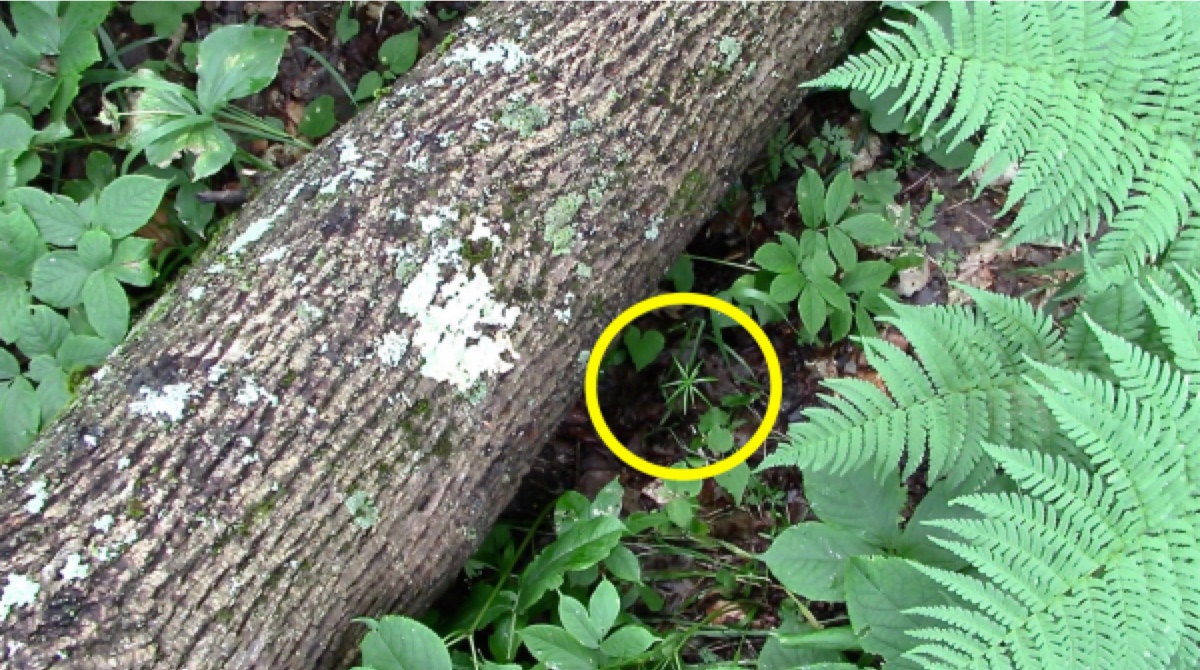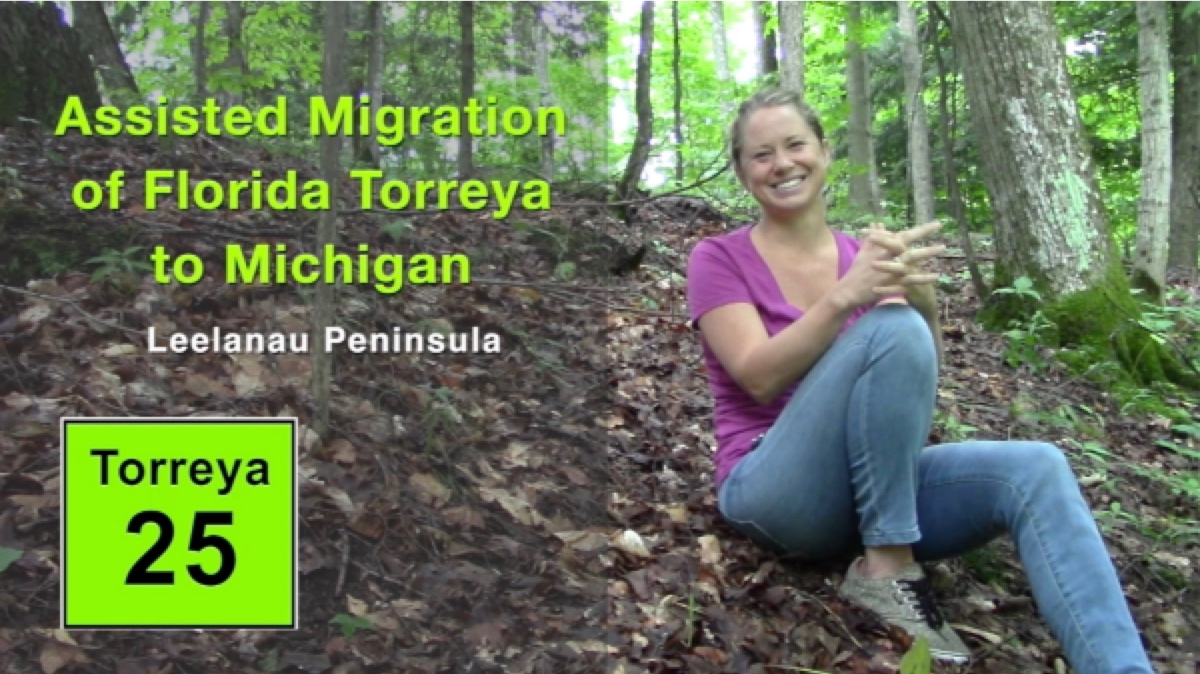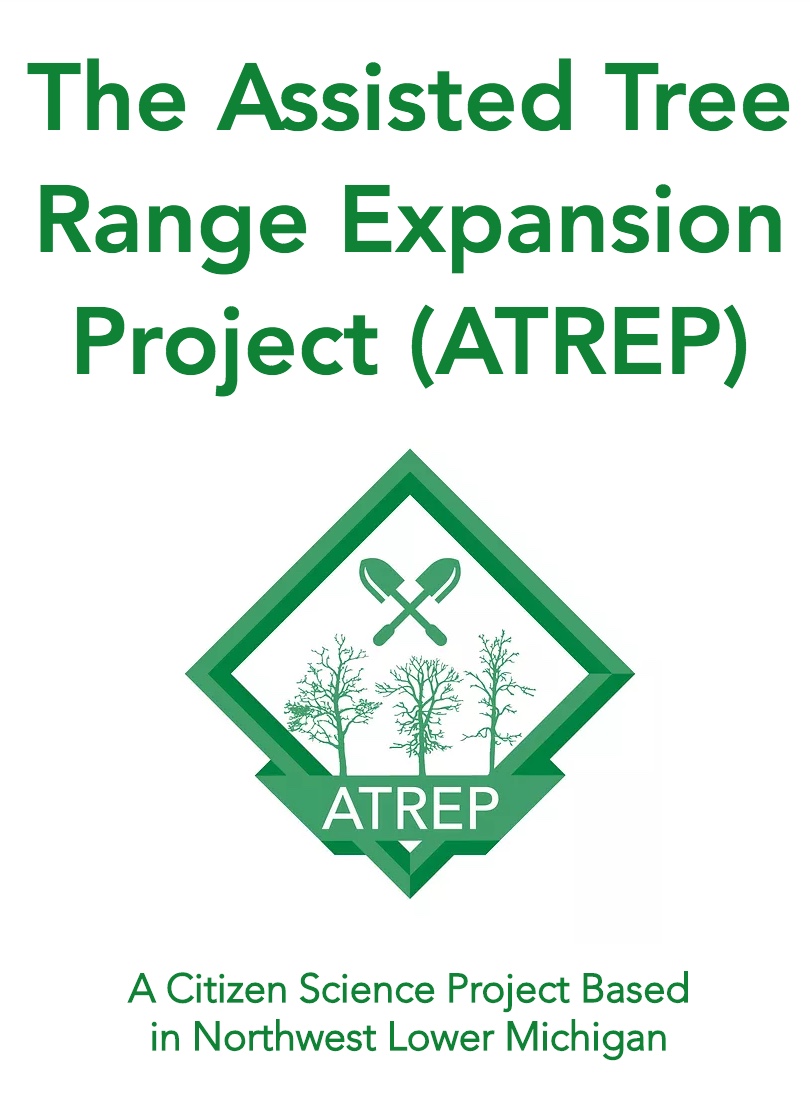 | INTRODUCTION by LIANA MAY: The property entails 40 acres of sugar maple-beech-ash mesic northern forest on upper slopes of large end moraine, various aspects and slopes ranging from 0 to >30%. Managed for conservation, with some firewood production for personal use. Within a large continuous forest of several thousand private and public (national park) acres.
I am already experimenting with some assisted migrations and restoration, as my forest is mostly beech and ash that are dying from the ash borer and beech bark disease. We have very steep north, east, and west facing slopes (>30%). We also have gentle south facing slopes. It's a big end moraine, so soils are unsorted till with a very lush understory. Moisture ranges from dry topslopes to mesic slopes to wet lowslopes with springs and seeps. The larger valley that we sit atop faces northeast, but we are fairly protected from dominant north-west winds. I see the three best options for planting as 1) the seepage area on steep slopes that face north, 2) the gentle south-facing slope, or 3) the deep and steep N-S running ravine. I put these on the attached Topo map. |
SEEDS VIA TORREYA GUARDIANS: 240 seeds mailed April 2017 from the donation by Frank Callahan of Fall 2016 seeds harvested from the pair of Torreya taxifolia trees on his property in Medford, OR.
SEED PLANTING DOCUMENTATION: Liana reported by email 15 April 2017: "Planted most of the seeds out today in a warm thunderstorm, eight groups across three locations with different aspects and slightly different wetnesses. I planted 25 in pots as well, since there were so many mole tunnels, even on the steepest slopes. I planted all seeds 4 to 6 inches in depth. I'm going to raise the potted ones at my house and see how they germinate, and if they do well I'll plant out with tree tubes."
EXCERPT FROM FOREST MANAGEMENT PLAN: ... Biodiversity conservation is the landowner's primary interest for the long-term functionality of the parcel in the regional landscape. Planting locations will be marked with stakes and flagging, and GPS located. Species currently identified for enhancement include the following:
• Panax quinquefolius - This forest parcel is prime habitat for Michigan-threatened American ginseng. 500 pre-stratified seeds will be planted in a few locations across the property in May of 2017 and monitored.• Taxus canadensis – Canadian yew will be re-introduced to this parcel and fenced to prevent herbivory.
• Torreya taxifolia - Assisted migration of federally endangered species from Florida in collaboration with Torreya Guardians (www.torreyagaurdians.org). Endemic to northern mesophytic steepheads in the Florida panhandle, it is theorized this tree once had a wide range including northern hardwood forests: "The dominant trees in a torreya ravine [in Florida] are red maple, southern sugar maple, beech, magnolia, basswood, elm, torreya, and sabal palm. Most of these species have northern affinities and are more commonly found in Appalachian cove forests. Other plants found in torreya ravines also represent species of northern affinities such as strawberry bush, hydrangea, and redbud." (Charles Wharton, The Natural Environments of Georgia, 1978). Therefore, assisted migration experiments are currently taking place to establish this species outside of the known historically native range in a hope to stage the U.S. population for recovery in the face of climate change. Plant in steephead slopes and protected valleys.
JULY 2018 REPORT: Connie Barlow visited the forest site with Liana May and Alison Horton on July 26. A total of three tiny seedlings were VIDEO-documented, as below:
VIDEO 25: Assisted Migration of Florida Torreya to Michigan - Leelanau Peninsula (15 minutes)


18 OCTOBER 2018 REPORT: by Liana May, "We now have about 12 seedlings, 1 to 3 across most of the plots in the Echo Valley forest."
1 OCTOBER 2019 REPORT: by Liana May, "This spring I could not re-locate a few. I really need to put fencing down (I assume the deer browsed them but I don't know). I will also add it to my list of things to do!"
30 AUGUST 2020 REPORT by Liana May: I was unable to relocate the torreya this year. Last spring I noticed they have been appressed to the ground by the snow load, and then this spring they appeared to be gone — even the one that was protected by the log (photograph on the website). I really could not determine what killed them; I assume they were eaten by insects or larger creatures. If I were to do this again, I would raise them in containers at my house and then plant them out once they have reached at least 6-12 inches tall. Since small mammals are likely a problem I would use 1" mesh cages around the saplings. I suspect it would take several large, heavy fruit-bearing adults to create enough of a seed load to lead to a self-sustaining population.
AUGUST 2020 UPDATE (by Connie Barlow) to include info on the overall "assisted range expansion" project that the Leelanau Conservancy initiated. Liana May's forest conservation easement is with this regional land trust.
... Given your conservation desires, and nature's challenges in assisting you in the face of the rapid changes occurring in our forests, we encourage you to take active steps to manage your land. One satisfying and effective action is to plant trees, annually if possible. This year, consider planting trees whose native ranges end just south of here, yet are projected to do well in our region according to research out of the USDA Northern Hardwoods Research Station, through a process called assisted tree range expansion. Trees like swamp white oak, shagbark hickory, hackberry, tulip tree, sassafras, and black gum have high potential to thrive in our forests since climate change has made our area hospitable for species that are native to southern Michigan. These trees also have the potential to fill in wildlife food gaps, which are imminent as beech continues to decline and nutritious beech nuts disappear. Black bears will need a food source that replaces beechnut and these trees can help.
This spring, the Leelanau Conservation District will be selling a selection of trees whose comfortable ranges are expanding north at their annual tree sale. You may order and purchase trees in bundles of five (single species, not mixes). Then, get to know your trees by visiting them at least once a year and checking in on their growth and health. You can participate in the Conservation District’s new citizen science initiative, the Assisted Tree Range Expansion Program (ATREP) by taking some basic annual measurements: height and then diameter when the tree is over six feet tall. Data from ATREP participants will help our Conservation District and agencies such as the office of Environment, Great Lakes, and Energy (EGLE) and Sleeping Bear Dunes National Lakeshore assess the viability of planting these species on a wider scale.... Find out more about the Assisted Tree Range Expansion Project (ATREP) here: https://www.atrep.net/. Thank you for being a forest steward.

